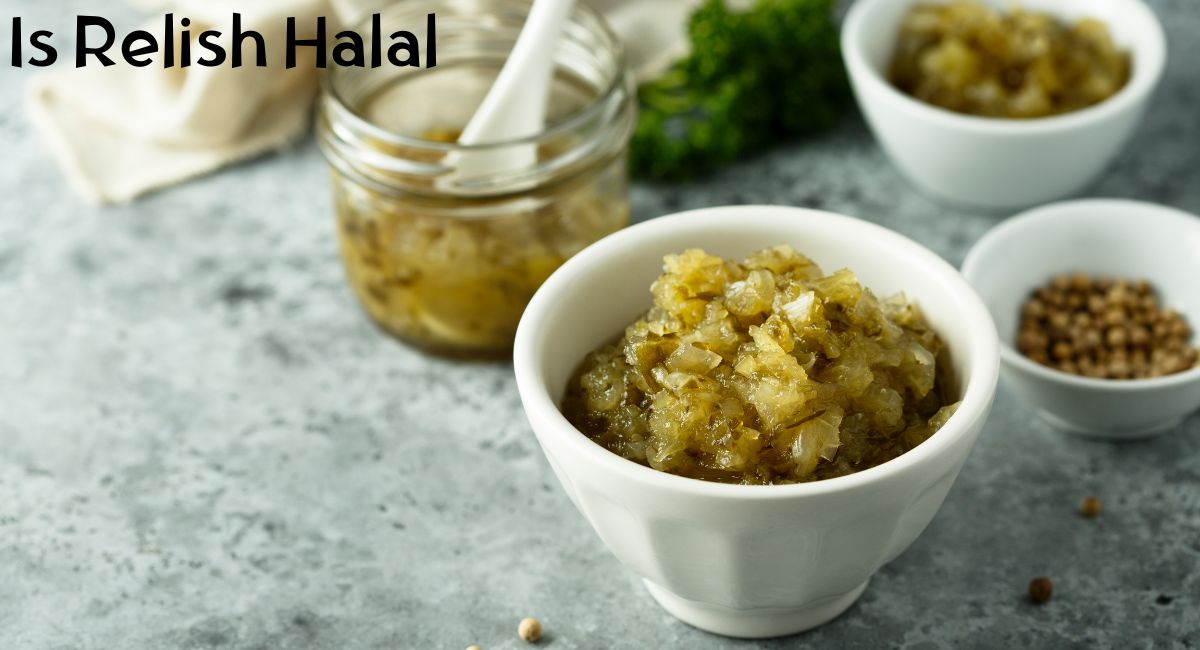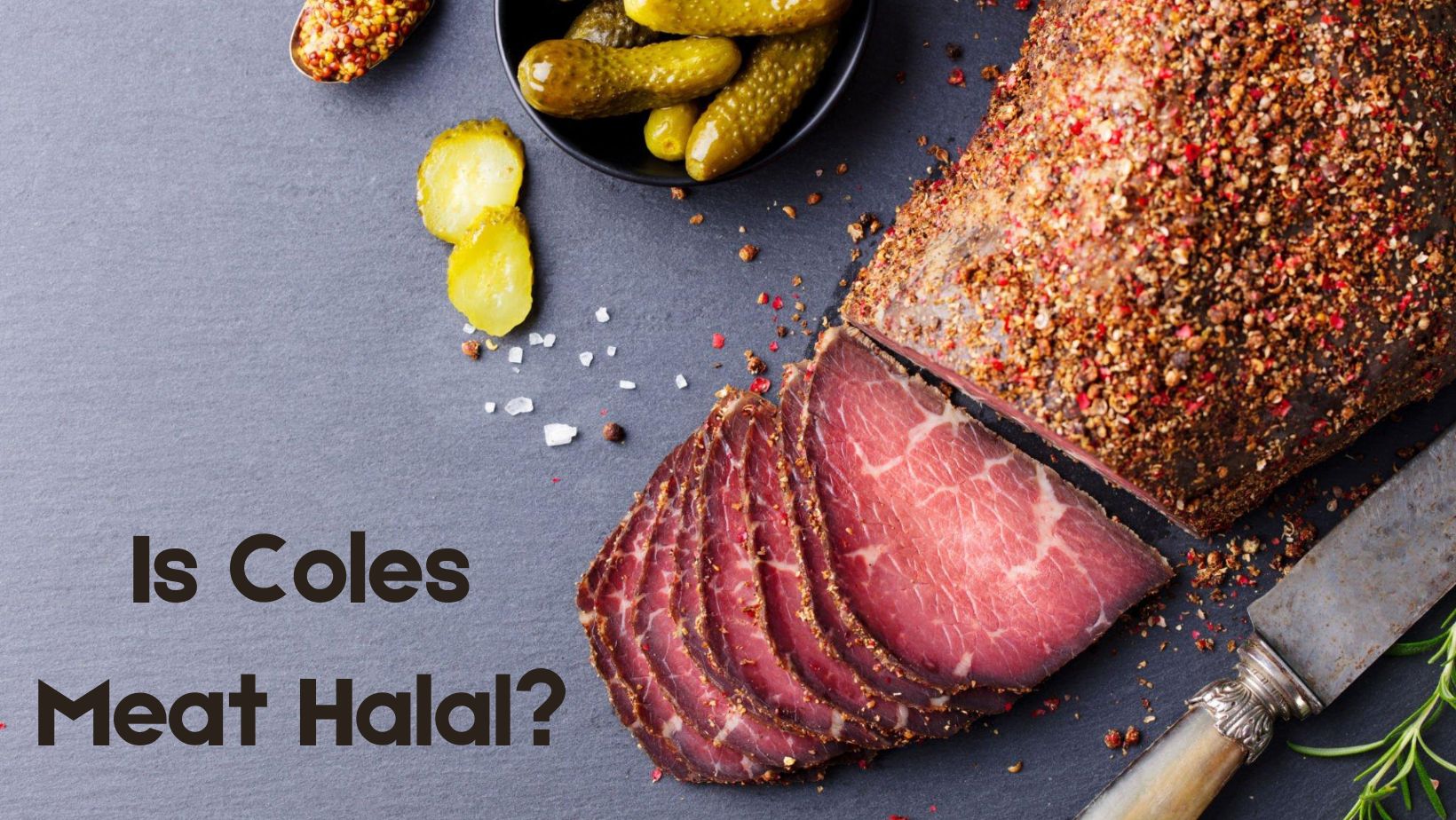Relish, like many other condiments and food products, can vary in terms of its Halal status depending on its ingredients and production process. Halal, which means “permissible” in Arabic, refers to food and beverages that are prepared and consumed in accordance with Islamic dietary laws outlined in the Quran.
To determine whether relish is Halal, one must carefully examine its ingredients and how it is made. In this article, we will delve into the factors that affect the Halal status of relish, shedding light on common ingredients and processes to help you make informed choices in accordance with Islamic dietary guidelines.
Is Relish Halal
The halal status of relish is contingent upon its ingredients, production process, and certification. Muslims must diligently check the ingredient list and seek halal certification to ensure the relish aligns with Islamic dietary laws.
Numerous brands offer halal relish options, catering to the diverse culinary preferences within the Muslim community. By opting for halal-certified relish, adherents to Islamic dietary laws can enjoy this versatile condiment without compromising their faith-based dietary restrictions.
We’ll detail everything below.
Deciphering the Halal Status of Relish
- Ingredients Check: The halal status of relish largely depends on its ingredients. Common ingredients like fruits, vegetables, sugar, and most spices are naturally halal. However, relish containing alcohol-based vinegar or any non-halal meat byproducts is non-halal.
- Halal Certification: When a product is halal-certified, it guarantees that it conforms to Islamic dietary laws. Muslims seeking halal relish should look for products with credible halal certifications from recognized halal certifying bodies.
- Cross-contamination: For a relish to be truly halal, it must be free from cross-contamination with non-halal items during its production, packaging, and transportation.
Halal Relish Options
Several brands offer halal-certified relish, ensuring that the product is permissible for consumption as per Islamic dietary laws. According to Halalharam.org, the following relishes are halal:
| Brand | Product Name | Status |
|---|---|---|
| Winco Foods | Sweet Relish | Halal |
| Wegmans | Sweet Relish | Halal |
| United | Sour Relish | Halal |
| T & R | Sweet Relish | Halal |
| Supreme | Dill Relish | Halal |
| Sprouts Farmers | Sweet Relish | Halal |
| Southern Home | Sweet Relish | Halal |
| Safeway | Sweet Relish | Halal |
| Safeway | Dill Relish | Halal |
| Oxford | Com Relish | Halal |
| Oxford | Onion Relish | Halal |
| Oxford | Pickle Relish | Halal |
| Meijer | Dill Relish | Halal |
| Market Basket | Sweet Relish | Halal |
| Main St | Sweet Relish | Halal |
| Leibo | Sour Relish | Halal |
| Kurtz | Sweet Relish | Halal |
| Ken’s | Dill Relish | Halal |
| Hy-Vee | Sweet Relish | Halal |
| Hannaford | Sweet Relish | Halal |
| Guss’ | Sweet Relish | Halal |
| Great Gherkins | Sweet Relish | Halal |
| Giant Eagle | Sweet Relish | Halal |
| Dietz & Watson | Dill Relish | Halal |
| Davidson | Dill Relish | Halal |
| Crossing Delancey | Sweet Relish | Halal |
| Cosmo’s | Dill Relish | Halal |
| Clover Valley | Dill Relish | Halal |
| Clover Valley | Sweet Relish | Halal |
| Carnegie | Sweet Relish | Halal |
| Always Save | Sweet Relish | Halal |
| Admiration | Dill Relish | Halal |
| Steers | Burger Relish Sauce | Halal |
| French’s | Classic Hamburger Relish | Halal |
| Bick’s | Crunchy Sweetcorn Relish | Halal |
| Shan | Mango Relish | Halal |
| Shan | Garlic Relish | Halal |
| Patak’s | Mixed Relish | Halal |
| Patak’s | Brinjal Eggplant Relish | Halal |
Is Henderson’s Relish Halal
Henderson’s Relish, with its distinct flavor and vegan-friendly ingredient list, stands out as a potentially Halal-compliant seasoning option. Its lack of animal byproducts, alcohol, and other non-permissible substances are promising indicators of its compliance with Halal dietary laws.
It contains the following ingredients:
- Water
- Spirit Vinegar
- Sugar
- Colour – Caramel E150C
- Sugar Syrup
- Salt
- Tamarinds
- Acetic Acid – Acid
- Cayenne Pepper
- Cloves
- Sweetener – Saccharin
- Garlic Oil
Moreover, according to the company website, Henderson Relish is considered suitable for vegans and vegetarians. They have been approved by The Vegetarian Society and you can spot the logo for the same on the brand label. This means that it does on contain any animal byproducts and hence can be suitable for halal consumption.
However, the lack of an official Halal certification means that individuals seeking stringent adherence to Halal dietary laws should proceed with caution and possibly consult directly with the manufacturers or opt for alternatives with a clear Halal certification.
Is Heinz Sweet Relish Halal
Heinz Sweet Relish is crafted from a mix of chopped cucumbers, glucose-fructose, vinegar, salt, calcium chloride, xanthan gum, potassium sorbate, spice extract, polysorbate 80, and sulphites. The absence of any direct Haram (forbidden) elements like pork or alcohol in its list of ingredients can be a reassuring factor for Muslim consumers.
While the ingredients seem permissible, it is paramount to have a Halal certification from an authentic Islamic body for official validation. The certification process examines not only the ingredients but also the production, handling, and packaging processes to avoid cross-contamination with Haram substances.
However, Heinz Sweet Relish does not hold any specific Halal certification. Hence, consumers seeking strict adherence to Halal dietary laws should contact Heinz directly or consult Halal certifying bodies for the most accurate and updated information.
What is Relish
Relish is a condiment that adds flavor and zest to a wide range of dishes. It typically consists of chopped or minced vegetables, fruits, or pickled ingredients, combined with vinegar, sugar, and various spices. Relishes can vary in texture from chunky to smooth, and they are often used as a topping or side accompaniment for meats, sandwiches, hot dogs, burgers, and other savory dishes. The history of relish dates back centuries and has evolved over time.
Relishes have their roots in ancient civilizations, where people used preserved vegetables and fruits to enhance the taste of their meals. In medieval Europe, relishes were often made with vinegar and spices to mask the flavors of spoiled or bland ingredients. The term “relish” itself comes from the Old French word “reles,” which means “something remaining” or “remnant.” This reflects its historical role in making use of leftover or surplus produce.
In the United States, relish became particularly popular in the 19th and 20th centuries. Varieties like sweet pickle relish, made from cucumbers, sugar, and vinegar, gained widespread popularity and became a staple on American picnic tables and at backyard barbecues. In addition to cucumber relish, other regional and cultural variations emerged, such as chow-chow in the South and cranberry relish in the Northeast.
Today, relish continues to be a versatile and beloved condiment, with many modern variations and flavors. It adds a burst of tangy, sweet, or spicy goodness to a variety of dishes and remains an integral part of culinary traditions around the world, showcasing the enduring appeal of this flavorful accompaniment.
What is Red Relish
Red relish is a type of relish that is typically characterized by its vibrant red color and sweet, tangy flavor. It is made by combining chopped or minced red vegetables and sometimes fruits with vinegar, sugar, and various spices. The exact ingredients can vary, but common components of red relish may include red bell peppers, tomatoes, onions, and sometimes red chili peppers for a hint of spiciness.
Red relish is often used as a condiment to add flavor and a pop of color to a variety of dishes. It pairs well with grilled meats, sausages, hot dogs, hamburgers, sandwiches, and even as a topping for salads. Its sweet and tangy profile can provide a pleasant contrast to savory or grilled foods, making it a popular choice for barbecue gatherings and picnics.
The specific recipe for red relish can vary regionally and from one manufacturer to another, so you may encounter different variations of red relish with unique flavor profiles and ingredient combinations. It is a versatile condiment that adds a burst of flavor and visual appeal to a wide range of dishes.
Relish Types
Relish comes in various types and flavors, each with its unique ingredients and characteristics. Here are some common types of relish:
- Pickle Relish: Pickle relish is one of the most well-known types of relish. It’s typically made from cucumbers that have been pickled in vinegar, sugar, and spices. Pickle relish can be sweet or dill, depending on the recipe. It’s a popular condiment for hot dogs, hamburgers, and sandwiches.
- Corn Relish: Corn relish is made from corn kernels, often combined with bell peppers, onions, vinegar, and spices. It has a sweet and tangy flavor with a hint of spiciness and is commonly used as a side dish or condiment.
- Cucumber Relish: Cucumber relish is similar to pickle relish but may contain additional ingredients like onions, bell peppers, and sometimes mustard seeds. It’s typically sweet and tangy and pairs well with grilled meats and sandwiches.
- Hot Pepper Relish: Hot pepper relish is made from spicy chili peppers, such as jalapeños or habaneros, combined with vinegar, sugar, and spices. It provides a fiery kick and is used to add heat and flavor to various dishes.
- Chow-Chow: Chow-chow is a Southern relish made from a medley of vegetables, including green tomatoes, cabbage, bell peppers, and onions. It’s seasoned with mustard seeds and turmeric, giving it a distinctive yellow color and tangy flavor. Chow-chow is often served with beans, fried chicken, or as a topping for hot dogs and burgers.
- Tomato Relish: Tomato relish features tomatoes as the primary ingredient, combined with onions, bell peppers, vinegar, and spices. It has a sweet and tangy flavor and can be used as a topping for grilled meats or as a side dish.
- Fruit Relish: Fruit relishes are made with various fruits like apples, mangoes, or cranberries, combined with vinegar, sugar, and spices. They offer a sweet and often slightly tart flavor and pair well with roasted or grilled meats, as well as cheeses.
- Piccalilli: Piccalilli is a British relish made with chopped vegetables like cauliflower, cucumbers, and green beans, along with mustard, turmeric, and vinegar. It has a bold, tangy flavor and is often used in sandwiches and alongside traditional British dishes.
- Onion Relish: Onion relish is made primarily from onions, often caramelized to bring out their natural sweetness, and then combined with vinegar, sugar, and spices. It has a sweet and savory flavor and is a great addition to burgers and sandwiches.
- Mango Chutney: While technically a type of chutney, mango chutney shares some similarities with relish. It’s made from ripe mangoes, sugar, vinegar, and spices, providing a sweet, tangy, and often spicy condiment that pairs well with Indian and Asian cuisines.
Relish Ingredients
The ingredients in relish can vary depending on the type of relish and the specific recipe, but here are some common ingredients you might find in various relishes:
- Vegetables: Relish often includes vegetables as a primary ingredient. Common choices include cucumbers, bell peppers, onions, and tomatoes. These vegetables are typically chopped or minced to achieve the desired texture.
- Fruits: Some relishes may also incorporate fruits for added sweetness and flavor complexity. For example, you might find relishes with ingredients like apples, mangoes, or cranberries.
- Vinegar: Vinegar is a key component in relish, providing acidity and a tangy flavor. White vinegar or apple cider vinegar are commonly used.
- Sugar: Sugar is added to balance the acidity of the vinegar and to give the relish a sweet taste. The type of sugar used can vary, and some recipes might use alternatives like honey or maple syrup for sweetness.
- Spices: Various spices and seasonings are added to give relish its distinctive flavor. Common spices include mustard seeds, celery seeds, turmeric, cloves, and black pepper. These spices can vary depending on the type of relish, with some being more savory and others more spicy.
- Salt: Salt is used to enhance the overall flavor and act as a preservative. It helps in drawing moisture out of the vegetables and aiding in the pickling process.
- Chili Peppers: In some relishes, chili peppers are added to provide heat and spiciness. This is more common in relishes designed to be spicy or hot.
- Garlic: Garlic can be used to add a savory, aromatic element to the relish. It’s often minced or finely chopped.
- Herbs: Fresh or dried herbs, such as dill, thyme, or basil, can be included to impart additional flavor and aroma.
How is Relish Made
Relish is made through a relatively simple pickling or preserving process that involves chopping or mincing vegetables and sometimes fruits, and then combining them with vinegar, sugar, spices, and salt. Here’s a basic overview of how relish is typically made:
Prepare the Vegetables: Wash and peel (if necessary) the vegetables you plan to use in your relish. Then, finely chop or mince them to your desired texture. You can use a food processor to make this process quicker and more uniform.
Combine with Spices and Salt: In a large pot, combine the chopped vegetables with the spices and salt. The exact spices and quantities can vary depending on the recipe, but common choices include mustard seeds, celery seeds, turmeric, and black pepper. Add salt to taste.
Add Sugar and Vinegar: Pour in the sugar and vinegar. The sugar adds sweetness to the relish, while the vinegar provides acidity and acts as a preservative. The ratio of sugar to vinegar can vary depending on whether you prefer a sweeter or tangier relish.
Cook and Simmer: Place the pot over medium heat and bring the mixture to a simmer. Allow it to simmer for about 10-15 minutes, stirring occasionally. The heat softens the vegetables and allows the flavors to meld together.
Adjust Seasoning: Taste the relish and adjust the seasoning as needed. You can add more sugar, vinegar, or spices to achieve the desired flavor profile.
Cool and Store: Once the relish has cooked and the flavors have melded, remove it from the heat and let it cool to room temperature. Then, transfer it to clean, sterilized jars with airtight lids. Seal the jars tightly.
Refrigerate or Process for Longer Shelf Life: If you plan to consume the relish relatively quickly, you can store it in the refrigerator for several weeks. If you want to extend its shelf life, you can process the jars in a hot water bath or pressure canner according to proper canning guidelines. This will allow you to store the relish at room temperature for a longer period.
You might also like these related articles
Are Pickles Haram: Delve into the world of pickles and discover whether these tangy treats are considered Halal or Haram. Explore the ingredients and preparation methods to better understand their status in Islamic dietary guidelines.
Is Sauerkraut Haram: Uncover the Halal status of sauerkraut, the famous fermented cabbage dish. This article explores the key factors that determine whether sauerkraut can be enjoyed in compliance with Islamic dietary laws.
Is Kimchi Haram: Dive into the flavors of Korean cuisine and find out if kimchi, the spicy fermented cabbage dish, aligns with Halal dietary principles. This article sheds light on the ingredients and fermentation process of kimchi.






